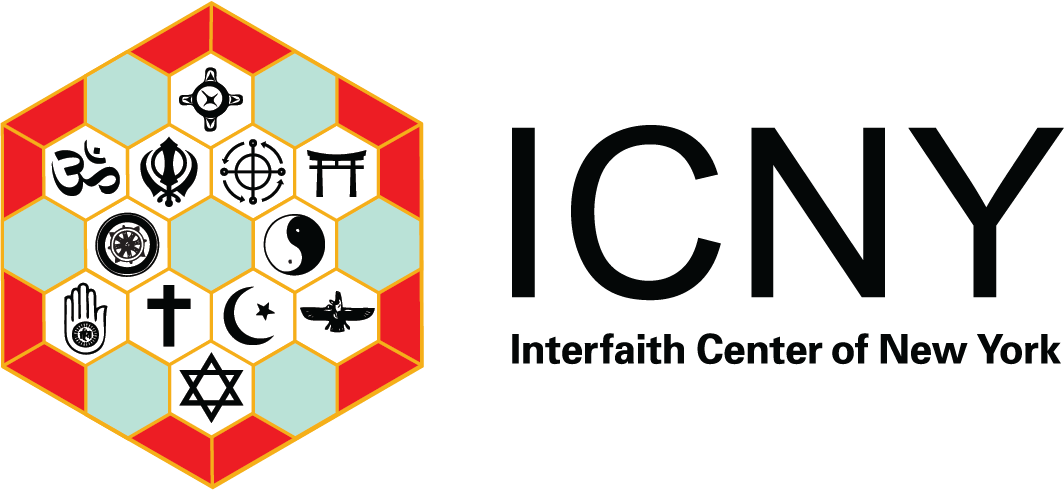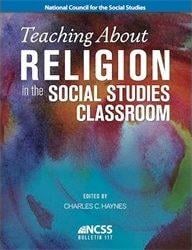This page will introduce you to academic research and policy debates about the role of religion in American education, including pedagogic and constitutional questions surrounding the study of religion in US public schools.
The first set of texts focuses on religious studies pedagogy. These aren’t exactly teachers’ guides, although most include practical discussions of curriculum development and classroom teaching, along with research and reflection on the importance of K-12 teaching about religious diversity. You can also click here for concise and downloadable teachers’ guides to the study of religion in K-12 schools. The second set of texts looks beyond the classroom, exploring debates over religious expression in public schools — including prayer in schools, Bible reading, holiday observance, and other heated issues.
For a deeper dive into current research on religion and education, you might also want to check out recent works published in the Routledge Research in Religion and Education scholarly book series.
K-12 Religious Studies Pedagogy
 | W. Y. Alice Chan, Teaching Religious Literacy to Combat Religious Bullying: Insights from North American Secondary Schools, Routledge, 2023.
|
 | W. Y. Alice Chan and Emile Lester, Equipping Educators to Teach Religious Literacy: Lessons from a Teacher Education Program in the American South, Routledge, 2023.
This volume provides a detailed evaluation of a unique education program implemented in secondary schools in Georgia to enhance teachers’ religious literacy and their ability to promote this in schools and classrooms. The text demonstrates that religious literacy can be proactively taught to students, while also highlighting key considerations and tensions around religious liberty in the American South. |
 | Adam Dinham, Religion and Belief Literacy: Reconnecting a Chain of Learning, Policy Press, 2020.
This book presents a crisis of religion and belief literacy to which education at every level is challenged to respond. As understanding different religions, beliefs and influences becomes increasingly important, it fills a gap for a resource in bringing together the debates around religious literacy, from theoretical approaches to teaching and policy. This timely publication provides a clear pathway for engaging well with religion and belief diversity in public and shared settings. |
Charles Haynes (ed.), Teaching about Religion in the Social Studies Classroom, National Council for the Social Studies, 2019. | |
 | Charles Haynes and Melissa Rogers (eds.), Teaching About Religion in Public Schools: Where Do We Go From Here?, Pew Forum on Religion & Public Life and the First Amendment Center, 2003. |
 | James Holt, Religious Education in the Secondary School: An Introduction to Teaching, Learning and the World Religions, Routledge, 2022. A comprehensive, straightforward introduction to religious diversity education in the secondary school classroom. Holt's work speaks, most directly, to the British field of “Religion Education,” but his insights are also relevant to American schools. Holt shows how religion can be taught in a way that explores its impact on the lives of people and society, engaging pupils and preparing them to become individuals who celebrate and respect diversity. |
Robert Jackson, Rethinking Religious Education and Plurality: Issues in Diversity and Pedagogy, Routledge, 2004. | |
Emile Lester, Teaching about Religions: A Democratic Approach for Public Schools, University of Michigan Press, 2011. | |
Diane Moore, Overcoming Religious Illiteracy: A Cultural Studies Approach to the Study of Religion in Secondary Education, Palgrave Macmillan, 2007. | |
Warren Nord, Does God Make a Difference? Taking Religion Seriously in Our Schools and Universities, Oxford University Press, 2010. | |
Warren Nord, Religion and American Education: Rethinking a National Dilemma, The University of North Carolina Press, 1995. | |
Warren Nord and Charles Haynes, Taking Religion Seriously Across the Curriculum, Association for Supervision and Curriculum Development and the First Amendment Center, 1998. | |
Farideh Salili and Rumjahn Hoosain (eds.), Religion in Multicultural Education, Information Age Publishing, 2006. | |
Linda K. Wertheimer, Faith Ed: Teaching about Religion in an Age of Intolerance. Beacon Press, 2015 |
Policy Debates about Religion in Schools
Joan DelFattore, The Fourth R: Conflicts Over Religion in America’s Public Schools, Yale University Press, 2004. DelFattore traces our school-prayer battles from the early 1800s -- when children were beaten or expelled for refusing to read the King James Bible -- to current disputes over prayer at public-school football games. Underlying these debates, she argues, is a struggle to balance two of the most fundamental tenets of American democracy: majority rule and individual rights. | |
Vincent Biondo and Andrew Fiala (eds.), Civility, Religious Pluralism, and Education, Routledge, 2014. | |
James Fraser, Between Church and State: Religion and Public Education in a Multicultural America, Saint Martin’s Press, 1999. | |
Kent Greenawalt, Does God Belong in Public Schools?, Princeton University Press, 2007. | |
Charles Haynes and Oliver Thomas (eds.), Finding Common Ground: A Guide to Religious Liberty in Public Schools, The First Amendment Center, 2001. | |
Steven Jones and Eric Sheffield (eds), The Role of Religion in 21st Century Public Schools, Peter Lang Publishing, 2009. | |
 | Kevin O'Grady, Religious Education as a Dialogue with Difference: Fostering Democratic Citizenship Through the Study of Religions in Schools, Routledge, 2018. By presenting research on English secondary school pupils' motivation in religious education, this volume argues that religious education is best understood as a democratic dialogue with difference. The book offers empirical evidence for this claim, and it demonstrates how learners gain in religious literacy, both through the exercise of democratic citizenship in the classroom and towards the goal of life-long democratic citizenship. |
Michael Waggoner (ed.), Religion in the Public Schools: Negotiating the New Commons. Rowman & Littlefield, 2013. |
















